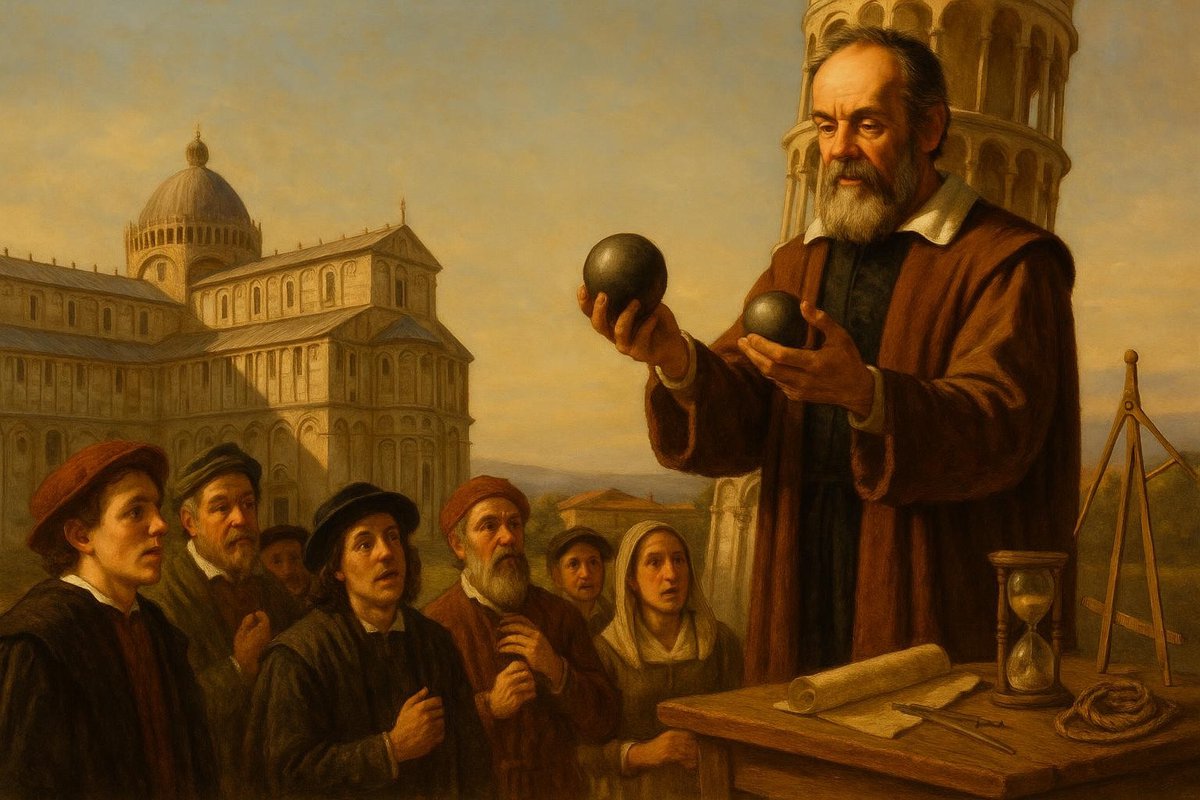
Introduction
Why do heavier objects fall faster than lighter ones? For centuries, many believed this was a simple truth. Yet, it was Galileo Galilei, during the intellectually vibrant period of Renaissance Italy, who dared to question and test this long-standing notion. His famous Leaning Tower of Pisa experiment not only confronted the established Aristotelian physics but also laid the groundwork for a new era of science, rooted in empirical evidence and critical thinking.
Hypothesis & Context
In the late 16th century, the prevailing belief in Europe was that heavier objects fell faster, a notion rooted in Aristotle’s teachings. Many philosophers and scholars accepted this without question, seeing it as an axiom of physics. However, Galileo Galilei, a mathematician and physicist, was skeptical. He hypothesized that, contrary to Aristotle, objects of different weights would fall at the same rate, barring air resistance.
- Galileo’s hypothesis challenged centuries of Aristotelian thought.
- His education at the University of Pisa immersed him in classical philosophy, yet his inquisitive nature led him to question established doctrines.
- He sought a method to empirically test these long-held beliefs in the context of Renaissance Italy’s burgeoning emphasis on observation and experimentation.
As Europe emerged from the Middle Ages, the Renaissance fostered a renewed interest in science, providing Galileo with the perfect backdrop to question and test ancient principles.
Setup & Method
Imagine the scene: the iconic Leaning Tower of Pisa, a monument as famous today as it was in Galileo’s time. Against the backdrop of this architectural marvel, Galileo conducted an experiment that would become legendary. He dropped two spheres of different masses from the tower to observe their descent.
- Chose the Leaning Tower due to its height, allowing ample observation time.
- Selected objects of varying masses, yet similar sizes, to minimize air resistance factors.
- Galileo meticulously timed the falls, possibly using his own heartbeat as a rudimentary clock.
This simple yet bold experiment was a direct challenge to the Aristotelian doctrine and was performed in a public spectacle, inviting curiosity and skepticism alike. The empirical approach was groundbreaking, transcending mere philosophical discourse.
Results & Reactions
Galileo’s experiment showed that both spheres hit the ground simultaneously, defying Aristotle’s assertion. This was not just an experiment; it was a spectacle that questioned the very fabric of accepted knowledge. The reactions were mixed, from awe to disbelief.
- Immediate results were clear and observable by all present, reinforcing the power of empirical evidence.
- Generated significant debate and skepticism among scholars, especially those rooted in Aristotelian tradition.
- Galileo’s findings were documented in his later works, influencing future scientific inquiry.
This experiment demonstrated the importance of observation and measurement in scientific endeavors. The empirical evidence was irrefutable, urging the intellectual community to reassess their understanding of motion and physics.
Implications
The implications of Galileo’s experiment were profound, setting the stage for modern physics. By demonstrating the equality of fall rates, he paved the way for Newtonian physics and the laws of motion that govern our understanding today.
- Marked a shift from philosophical to observational science, influencing future scientific methodology.
- Encouraged the notion that scientific truths should be tested and validated through experimentation.
- Galileo’s methods inspired future scientists, including Isaac Newton, in developing comprehensive laws of motion.
His experiment was more than a mere demonstration; it was a catalyst for intellectual progress, challenging scholars to adopt the scientific method and critically evaluate long-held beliefs.
In retrospect, Galileo’s daring experiment at the Leaning Tower of Pisa was more than just a scientific demonstration. It was a pivotal moment in history that shattered the chains of ancient thought, propelling mankind towards a future enlightened by reason, evidence, and inquiry.
Fuel Someone Else’s Curiosity
If Galileo’s journey into the realms of physics has sparked a fire of curiosity within you, share this story. Discuss it with friends, ponder the nature of science with family, or inspire a budding scientist. After all, the spirit of inquiry is at the heart of human progress.

Leave a Reply